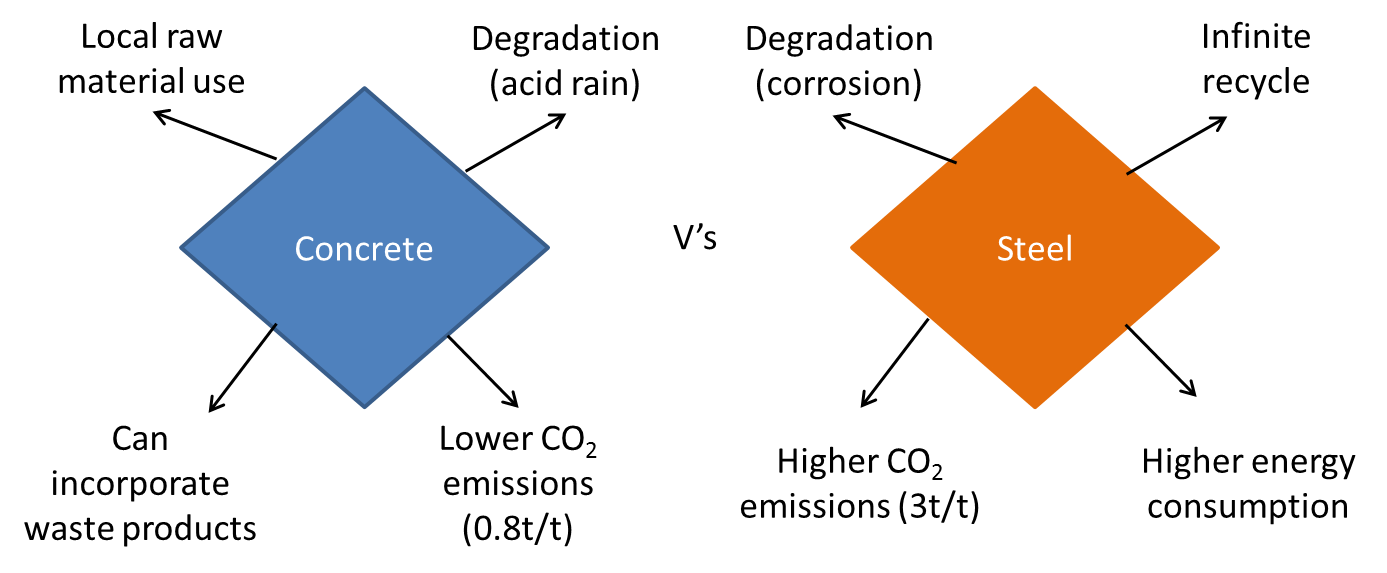Week 12 - Materials
3. LCA
3.8. LCA for Buildings
In the life cycle assessment of buildings, the overall result is strongly influenced by both the assumed service life and the life cycle phase of the building. At the early planning stage, fundamental design changes can be made, however at a later stage (e.g detailed design or during construction), changes are more difficult to implement.
To determine the functional unit, the function and form of construction of the building must be described. Parameters which should be identified include:
- Location and integration into the environment
- Building type
- Volume and areas
- Type of construction
- Type and intensity of use
- Assumed life service
At the concept stage, a dominance analysis can identify crucial contributors in the life cycle from which routes for optimisation can be established. There is much uncertainty at this stage, in terms of design, construction and material choice. Mean data for materials, material groups or forms of construction are best used for life cycle estimates. During the detailed design, less changes are possible however components which have a large impact may be modified. After completion, documentation of ecological performance and monitoring are necessary. Is the design successful ? These results should be assessed for reliability with likely errors identified. The life cycle assessment should follow the principles of ISO 14040 and 14044 and may include:
- Building use (energy and resource use)
- Deconstruction, recycling and disposal
- Life stage, e.g. production, use and end of life
"As well as all the materials used in the construction of the building, the life cycle assessment must also cover all the relevant processes of energy provision (e.g for heating, air conditioning and ventilation)" Konig, 2010.
